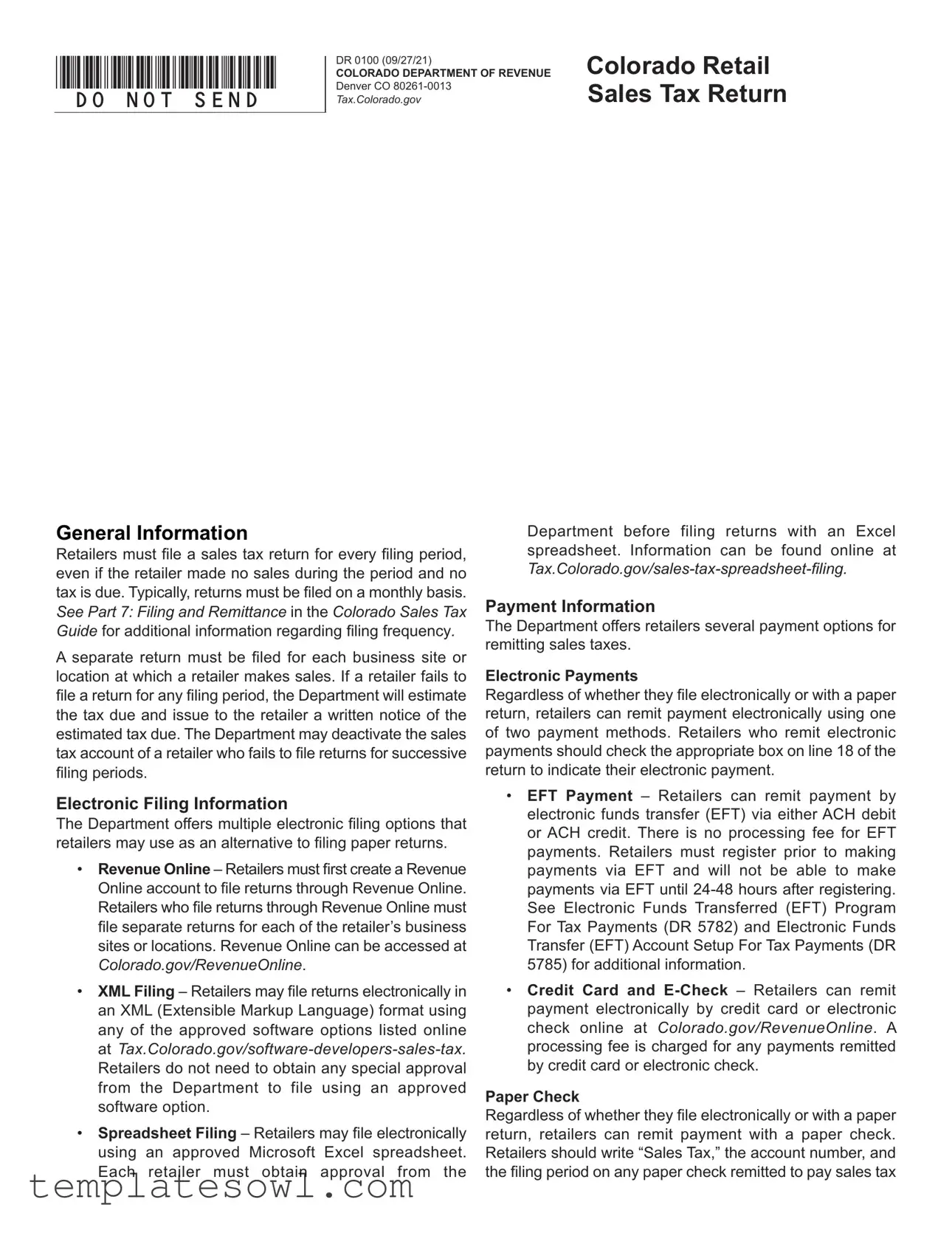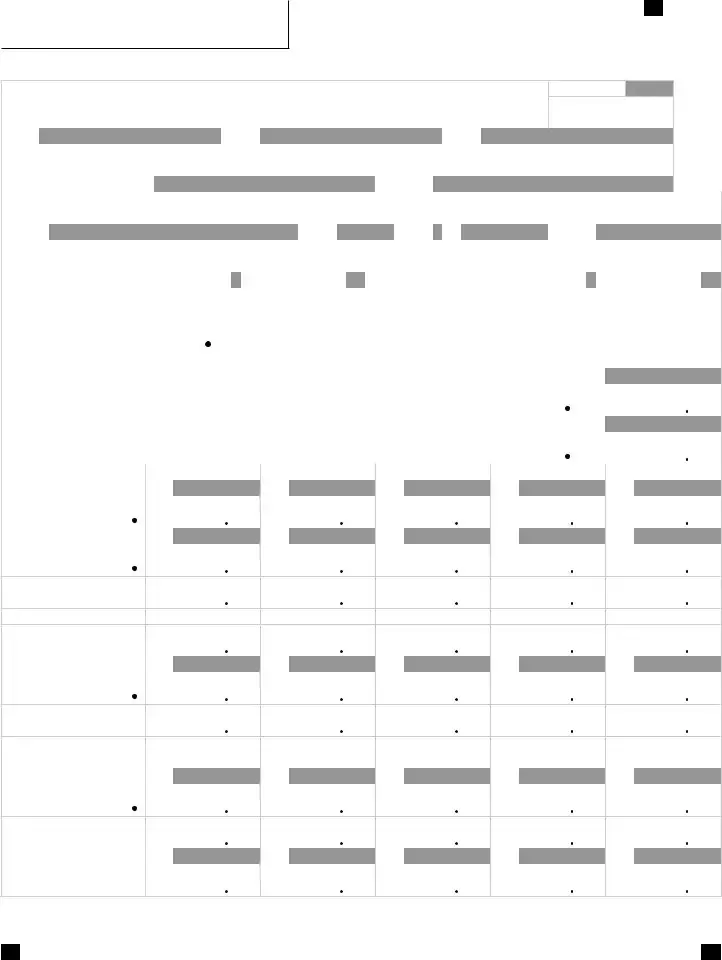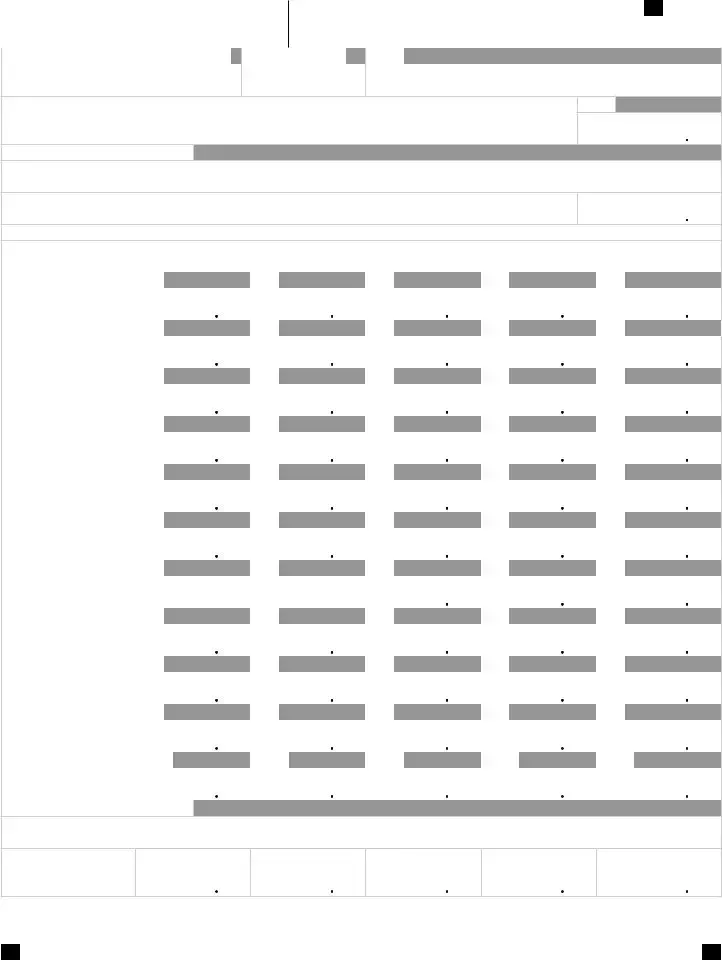Monthly Returns: due the 20th day of the month following the reporting month.
Quarterly Returns:
1st quarter (January – March): due April 20
2nd quarter (April – June): due July 20
3rd quarter (July – September): due October 20
4th quarter (October – December): due January 20 Annual Returns: (January – December): due January 20
Amended Returns
If a retailer is filing a return to amend a previously filed return, the retailer must mark the applicable box to indicate that the return is an amended return. A separate amended return must be filed for each filing period and for each site/location. The amended return replaces the original return in its entirety and must report the full corrected amounts, rather than merely the changes in the amount of sales or tax due. If the amended return reduces the amount of tax reported on the original return, the retailer must file a Claim for Refund (DR 0137) along with the amended return to request a refund of the overpayment. If the amended return is filed after the due date and reports an increase in the amount of tax due, penalties and interest will apply.
State and State-Collected Local Sales Taxes
The Colorado Retail Sales Tax Return (DR 0100) is used to report not only Colorado sales tax, but also sales taxes administered by the Colorado Department of Revenue for various cities, counties, and special districts in the state. The sales taxes for different local jurisdictions are calculated and reported in separate columns of the DR 0100. Local sales taxes reported on the DR 0100 include:
•RTD/CD – Sales taxes for the Regional Transportation District (RTD) and the Scientific and Cultural Facilities District (CD) are reported in the RTD/CD column of the DR 0100.
•Special District – Special district sales taxes reported in the Special District column include sales taxes for any Regional Transportation Authority (RTA), Multi- Jurisdictional Housing Authority (MHA), Public Safety Improvements (PSI), Metropolitan District Tax (MDT), or Health Services District (HSD). Sales taxes for Mass Transportation Systems (MTS) and Local Improvement Districts (LID) are not reported in the Special District column, but are instead reported in the County/MTS and City/LID columns, respectively.
•County/MTS – County and Mass Transportation Systems (MTS) sales taxes administered by the Department are reported in the County/MTS column.
•City/LID – City and Local Improvement Districts (LID) sales taxes administered by the Department are reported in the City/LID column.
Many home-rule cities in Colorado administer their own sales taxes. Sales taxes for these self-collected home-rule cities
cannot be reported and remitted with the DR 0100. Retailers must report such taxes directly to the applicable city.
See Department publication Colorado Sales/Use Tax Rates (DR 1002) for tax rates, service fee rates, and exemption information for state and state-administered sales taxes. This publication also contains a list of self-administered home-rule cities.
Avoiding Common Filing Errors
You can avoid several common errors by reviewing your return before filing it to verify that:
•You completed all applicable lines of the return.
•You completed all three pages of the return, including Schedule A and Schedule B. You must complete and submit all three pages when filing your return, even if you have no deductions or exemptions to report on Schedule A or Schedule B.
•You used the correct version of the form, depending on the filing period. There are different versions of the sales tax return for each year 2016 through 2020.
•You entered your account number and site number correctly on your return.
•You used the correct tax rate for each jurisdiction reported on your return. See
Tax.Colorado.gov/how-to-look-up-sales-use-tax-rates for information about state and local tax rates.
Additional information about common filing errors can be found online at Tax.Colorado.gov/sales-tax-filing-information.
Specific Line Instructions
Retailers must complete all applicable lines, including lines 1, 2, 3, 4, 14, and 18, entering 0 (zero), if applicable. Retailers must also include Schedules A and B for each site/location.
Line 1. Gross sales of goods and services for this site/ location only
Enter the gross sales of goods and services made during the filing period. Include only sales sourced pursuant to state law to the site/location indicated on the return. See Part 7: Retail Sales in the Colorado Sales Tax Guide for additional information regarding sourcing.
For small retailers subject to origin sourcing rules, include all sales made from the retailer’s physical site/location, regardless of whether the property or service is delivered to the purchaser at another location.
For all other retailers who are subject to destination sourcing rules, do not include on a return for any physical site any sales delivered to the purchaser and sourced for sales tax purposes to another location. For non-physical sites, include all sales delivered and sourced to the location jurisdiction code associated with the non-physical site.
Include all sales of goods and services, whether taxable or not, and the collection during the filing period of any bad debts deducted on a return filed for a previous filing period.









